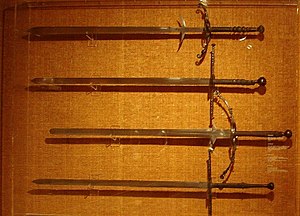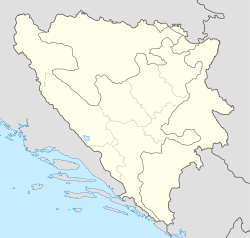액시노맨시
Axinomancy도끼는 도끼, 도끼 또는 톱을 사용한 몇 가지 불명확한 점괘법 중 하나이다.도끼를 땅에 던지거나 나무로 휘두르는 방법, 손잡이의 방향이나 칼날이 떨리는 방향 등을 해석하는 방법 등이 대부분이다.[1][2]이것의 형태는 공리인데, 이것은 목탁에 찔러 넣은 도끼의 칼날이 떨리는 것을 구분자가 해석하는 것이다.
또 다른 흥미로운 방법은 도끼 머리를 불이 붙을 때까지 가열한 다음 색깔과 모양을 해석하는 것이다.[1]그것을 좋은 평판을 얻고 있는 고대 그리스인들에게 기인된 변종은 도끼 가장자리에 있는 구형 아지트 조각의 균형을 잡는 것이다.[3][4]농약이 굴러가는 방향은 필요에 따라 해석할 수 있다.[5][3]
일부 소식통들은, 본문에서 직립 축에 대한 언급이 점괘를 위한 것은 아니지만, 시편 74편은 예루살렘의 함락을 예측하기 위해 축음법을 사용하는 것을 가리킨다고 주장한다.[6]
참조
 이 글에는 현재 공개 도메인에 있는 출판물의 텍스트가 통합되어 있다. Chambers, Ephraim, ed. (1728). Cyclopædia, or an Universal Dictionary of Arts and Sciences (1st ed.). James and John Knapton, et al.
이 글에는 현재 공개 도메인에 있는 출판물의 텍스트가 통합되어 있다. Chambers, Ephraim, ed. (1728). Cyclopædia, or an Universal Dictionary of Arts and Sciences (1st ed.). James and John Knapton, et al.{{cite encyclopedia}}:누락 또는 비어 있음title=(도움말)[1]
- ^ a b "Axiomancy". The Element Encyclopedia of the Psychic World. Harper Element. 2006. p. 52.
- ^ Arthur Bernard Cook (1925). Zeus: a study in ancient religion. The University Press. Retrieved 29 January 2011.
- ^ a b J. S. Forsyth (1827). Demonologia: or, Natural knowledge revealed: being an exposé of ancient and modern superstitions, credulity, fanaticism, enthusiasm, & imposture, as connected with the doctrine, caballa, and jargon, of amulets, apparitions, astrology, charms, demonology ... witchcraft, &c. J. Bumpus. p. 143.
- ^ Edward Smedley; William Cooke Taylor; Henry Thompson; Elihu Rich (1855). The occult sciences: sketches of the traditions and superstitions of past times, and the marvels of the present day. R. Griffin and company. p. 328. Retrieved 29 January 2011.
- ^ W. H. Davenport Adams (March 2003). Witch, Warlock and Magician. Kessinger Publishing. p. 57. ISBN 978-0-7661-4671-6.
- ^ Spence, Lewis (September 2006) [1920]. An Encyclopaedia of Occultism. Cosimo. p. 57. ISBN 0486426130.


